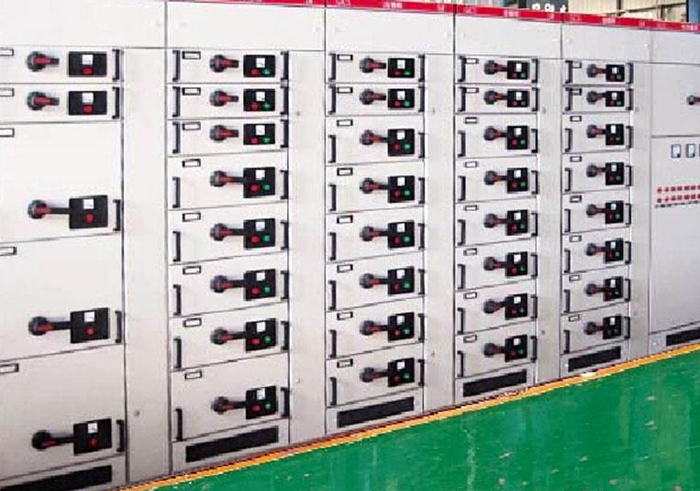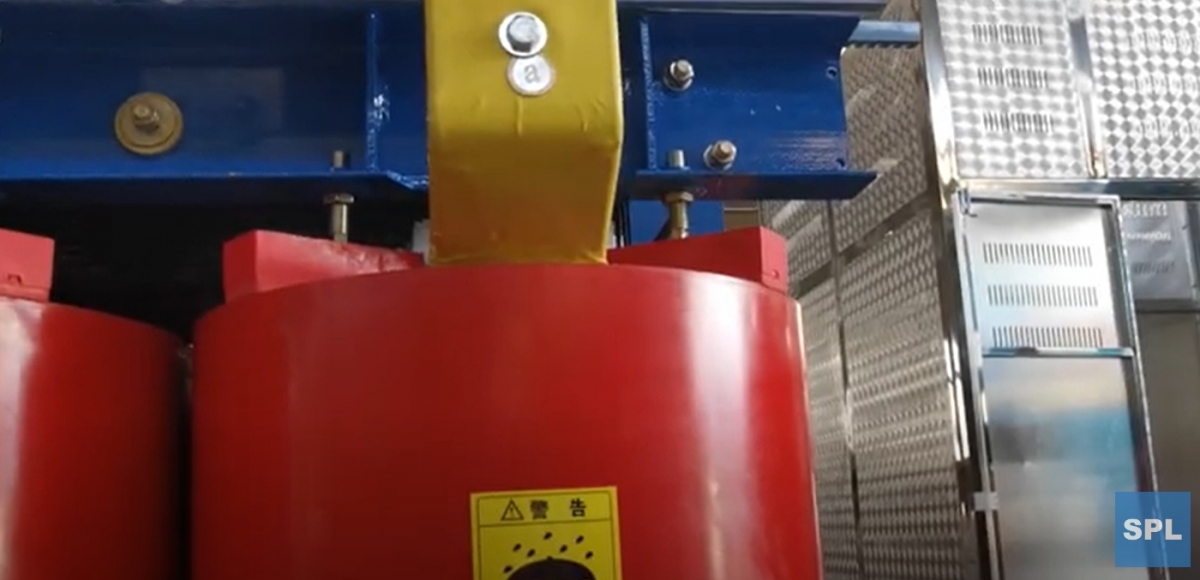Table of Contents
الاختلافات بين النوع الجاف والمحولات المملوءة بالزيت
تعد المحولات مكونات أساسية في الأنظمة الكهربائية، حيث تساعد على تنظيم مستويات الجهد وضمان نقل الكهرباء بكفاءة. هناك نوعان رئيسيان من المحولات شائعة الاستخدام في أنظمة توزيع الطاقة: المحولات من النوع الجاف والمحولات المملوءة بالزيت. ولكل نوع مجموعته الخاصة من المزايا والعيوب، مما يجعلها مناسبة لمختلف التطبيقات.
| نموذج | التصنيف السعة (KVA) | الجهد combination(KV) | إيقاف التحميل الخسارة(W) | تحميل الخسائر(W) | إيقاف التحميل current ( بالمائة ) | جهد الدائرة القصيرة ( بالمائة ) |
| SC13-30 | 30 | 6,6.3,6.6,10,11/0.4 | 150 | 710 | 2.3 | 4.0 |
| SC13-50 | 50 | 6,6.3,6.6,10,11/0.4 | 215 | 1000 | 2.2 | 4.0 |
| SC13-80 | 80 | 6,6.3,6.6,10,11/0.4 | 295 | 1380 | 1.7 | 4.0 |
| SC13-100 | 100 | 6,6.3,6.6,10,11/0.4 | 320 | 1570 | 1.7 | 4.0 |
| SC13-125 | 125 | 6,6.3,6.6,10,11/0.4 | 375 | 1850 | 1.5 | 4.0 |
| SCB13-160 | 160 | 6,6.3,6.6,10,11/0.4 | 430 | 2130 | 1.5 | 4.0 |
| SCB13-200 | 200 | 6,6.3,6.6,10,11/0.4 | 495 | 2530 | 1.3 | 4.0 |
| SCB13-250 | 250 | 6,6.3,6.6,10,11/0.4 | 575 | 2760 | 1.3 | 4.0 |
| SCB13-315 | 315 | 6,6.3,6.6,10,11/0.4 | 705 | 3470 | 1.1 | 4.0 |
| SCB13-400 | 400 | 6,6.3,6.6,10,11/0.4 | 785 | 3990 | 1.1 | 4.0 |
| SCB13-500 | 500 | 6,6.3,6.6,10,11/0.4 | 930 | 4880 | 1.1 | 4.0 |
| SCB13-630 | 630 | 6,6.3,6.6,10,11/0.4 | 1070 | 5880 | 0.9 | 4.0 |
| SCB13-630 | 630 | 6,6.3,6.6,10,11/0.4 | 1040 | 5960 | 0.9 | 6.0 |
| SCB13-800 | 800 | 6,6.3,6.6,10,11/0.4 | 1210 | 6960 | 0.9 | 6.0 |
| SCB13-1000 | 1000 | 6,6.3,6.6,10,11/0.4 | 1410 | 8130 | 0.9 | 6.0 |
| SCB13-1250 | 1250 | 6,6.3,6.6,10,11/0.4 | 1670 | 9690 | 0.9 | 6.0 |
| SCB13-1600 | 1600 | 6,6.3,6.6,10,11/0.4 | 1960 | 11700 | 0.9 | 6.0 |
| SCB13-2000 | 2000 | 6,6.3,6.6,10,11/0.4 | 2440 | 14400 | 0.7 | 6.0 |
| SCB13-2500 | 2500 | 6,6.3,6.6,10,11/0.4 | 2880 | 17100 | 0.7 | 6.0 |
المحولات من النوع الجاف، كما يوحي الاسم، لا تستخدم الزيت كوسيلة تبريد. وبدلاً من ذلك، فإنها تعتمد على الهواء أو الغازات الأخرى لتبديد الحرارة المتولدة أثناء التشغيل. وهذا يجعلها خيارًا أكثر أمانًا للتركيبات الداخلية، حيث لا يوجد خطر تسرب الزيت أو مخاطر الحريق. تعتبر المحولات من النوع الجاف أيضًا أكثر صداقة للبيئة، حيث أنها لا تتطلب استخدام الزيت، الأمر الذي يمكن أن يكون ضارًا إذا لم يتم التخلص منه بشكل صحيح.
| نوع | تصنيف power (KVA) | الجهد combination(KV) | إيقاف التحميل الخسارة(W) | تحميل الخسائر(W) | إيقاف التحميل current ( بالمائة ) | جهد الدائرة القصيرة ( بالمائة ) |
| SC12-30 | 30 | 6,6.3,6.6,10,11/0.4 | 150 | 710 | 2.0 | 4.0 |
| SC12-50 | 50 | 6,6.3,6.6,10,11/0.4 | 215 | 1000 | 2.0 | 4.0 |
| SC12-80 | 80 | 6,6.3,6.6,10,11/0.4 | 295 | 1380 | 1.5 | 4.0 |
| SC12-100 | 100 | 6,6.3,6.6,10,11/0.4 | 320 | 1570 | 1.5 | 4.0 |
| SC12-125 | 125 | 6,6.3,6.6,10,11/0.4 | 375 | 1850 | 1.3 | 4.0 |
| SCB12-160 | 160 | 6,6.3,6.6,10,11/0.4 | 430 | 2130 | 1.3 | 4.0 |
| SCB12-200 | 200 | 6,6.3,6.6,10,11/0.4 | 495 | 2530 | 1.1 | 4.0 |
| SCB12-250 | 250 | 6,6.3,6.6,10,11/0.4 | 575 | 2760 | 1.1 | 4.0 |
| SCB12-315 | 315 | 6,6.3,6.6,10,11/0.4 | 705 | 3470 | 1.0 | 4.0 |
| SCB12-400 | 400 | 6,6.3,6.6,10,11/0.4 | 785 | 3990 | 1.0 | 4.0 |
| SCB12-500 | 500 | 6,6.3,6.6,10,11/0.4 | 930 | 4880 | 1.0 | 4.0 |
| SCB12-630 | 630 | 6,6.3,6.6,10,11/0.4 | 1070 | 5880 | 0.85 | 4.0 |
| SCB12-630 | 630 | 6,6.3,6.6,10,11/0.4 | 1040 | 5960 | 0.85 | 6.0 |
| SCB12-800 | 800 | 6,6.3,6.6,10,11/0.4 | 1210 | 6960 | 0.85 | 6.0 |
| SCB12-1000 | 1000 | 6,6.3,6.6,10,11/0.4 | 1410 | 8130 | 0.85 | 6.0 |
| SCB12-1250 | 1250 | 6,6.3,6.6,10,11/0.4 | 1670 | 9690 | 0.85 | 6.0 |
| SCB12-1600 | 1600 | 6,6.3,6.6,10,11/0.4 | 1960 | 11700 | 0.85 | 6.0 |
| SCB12-2000 | 2000 | 6,6.3,6.6,10,11/0.4 | 2440 | 14400 | 0.7 | 6.0 |
| SCB12-2500 | 2500 | 6,6.3,6.6,10,11/0.4 | 2880 | 17100 | 0.7 | 6.0 |
من حيث التكلفة، تكون المحولات من النوع الجاف بشكل عام أكثر تكلفة من المحولات المملوءة بالزيت بسبب استخدام مواد عزل متخصصة. ومع ذلك، فإن التكلفة الأولية للمحولات من النوع الجاف قد يتم تعويضها بتكاليف صيانة أقل وعمر أطول مقارنة بالمحولات المملوءة بالزيت.
عند الاختيار بين النوع الجاف والمحولات المملوءة بالزيت، من المهم مراعاة المتطلبات المحددة للمحولات المملوءة بالزيت. التطبيق، مثل الظروف البيئية، وتصنيف الطاقة، واحتياجات الصيانة. تقدم بعض الشركات المصنعة، مثل الشركة المصنعة في الصين، حلول محولات مخصصة لتلبية الاحتياجات الفريدة لعملائها. يمكن تصميم هذه المحولات المخصصة لتناسب قيود المساحة ومستويات الجهد ومتطلبات التبريد المحددة. فوائد كل نوع . من خلال فهم الاختلافات بين هذين النوعين من المحولات، يمكنك اتخاذ قرار مستنير عند اختيار المحول المناسب لتطبيقك.

Oil-filled Transformers, on the other hand, use liquid insulation in the form of mineral oil or silicone oil. The oil not only provides insulation but also helps to dissipate heat and protect the transformer from arcing and corona discharge. However, oil-filled transformers are more susceptible to contamination from moisture, dust, and other contaminants, which can degrade the insulation and reduce the transformer’s lifespan.
Another key difference between dry type and oil-filled transformers is their cooling systems. Dry type transformers rely on natural convection or forced air cooling to dissipate heat, while oil-filled transformers use the oil as a cooling medium. Oil-filled transformers are more efficient at dissipating heat, making them suitable for high-power applications where heat dissipation is critical.

In terms of cost, dry type transformers are generally more expensive than oil-filled transformers due to the use of specialized insulation materials. However, the initial cost of a dry type transformer may be offset by lower maintenance costs and longer lifespan compared to oil-filled transformers.
When choosing between dry type and oil-filled transformers, it is important to consider the specific requirements of the application, such as environmental conditions, power rating, and maintenance needs. Some manufacturers, such as China manufacturer, offer customized transformer solutions to meet the unique needs of their customers. These customized transformers can be designed to fit specific space constraints, voltage Levels, and cooling requirements.
To learn more about the differences between dry type and oil-filled transformers, China manufacturer offers informative videos on their website that explain the key features and benefits of each type. By understanding the differences between these two types of transformers, you can make an informed decision when selecting the right transformer for your application.

